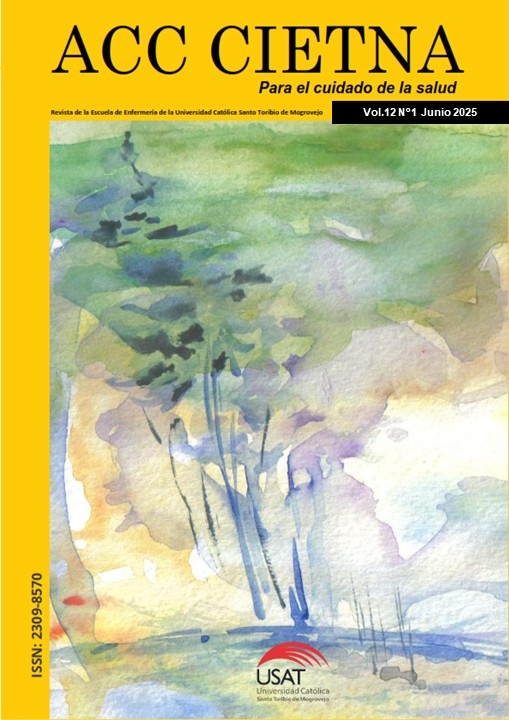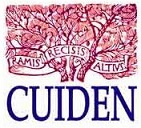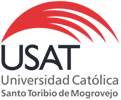Nursing Care in Cultural Birth: Integrative Review
Abstract
Objective: To analyze the scientific evidence on nursing care in culturally competent childbirth. Method: An integrative literature review was conducted using the PRISMA methodology. The search was carried out in six databases: SCOPUS, PubMed Central, Web of Science, EBSCOhost, Biblioteca Virtual en Salud, and MDPI, between February and May 2024. DeCS descriptors in Spanish, English, and Portuguese were used: Care, Nursing, Childbirth, and Culturally Competent Healthcare, combined using the Boolean operator AND. Specific inclusion and exclusion criteria were applied, ultimately selecting 11 articles. Main results: The included studies reveal that nursing care in childbirth can significantly benefit from the integration of a cultural approach. Humanized practices, partial recognition of traditional medicine, language barriers, and limited training in interculturality were identified. Although staff are reported to be willing to incorporate cultural practices, there are structural, educational, and attitudinal limitations toward traditional midwives. Intercultural care improves maternal satisfaction, reduces the use of unnecessary cesarean sections, and promotes more respectful practices. Overall conclusion: Nursing presents a fundamental pillar of improving its practice through a culturally competent approach. Adopting strategies that integrate women's values, beliefs, and traditions during childbirth allows for more holistic, humane, and respectful care, with direct benefits for the woman and her family.
Downloads
References
Organización Mundial de la Salud. La Organización Mundial de la Salud señala que las embarazadas deben poder tener acceso a una atención adecuada en el momento adecuado [Internet]. 2022 [citado 21 May 2025]. Disponible en: https://bit.ly/3NP9TPg
Restrepo Castro OI, Farías Vela A, Capera López L, Ortíz Zornosa S, Restrepo Guarnizo MC, Díaz Quijano DM, et al. Ventajas obstétricas y neonatales del parto humanizado. Rev. cuba. obstet. ginecol. [Internet]. 9 de enero de 2024 [citado 21 May 2025];48(3):e1208. Disponible en: https://revginecobstetricia.sld.cu/index.php/gin/article/view/372
Organización Mundial de la Salud. La OMS y otras organizaciones reclaman mejores condiciones laborales para las parteras [Internet]. 2023 [citado 21 May 2025]. Disponible en: https://bit.ly/40qbSkM
Fondo de Población de las Naciones Unidas. El estado de las matronas en el mundo 2021[Internet]. New York: Organización Mundial de la Salud / Fondo de Población de las Naciones Unidas / Consejo Internacional de Matronas; 2021[citado 21 May 2025], 80p. Disponible en: https://www.unfpa.org/sites/default/files/pub-pdf/21-038-UNFPA-SoWMy2021-Report-ESv7131.pdf
Instituto Nacional de Estadística y Geografía (INEGI). Natalidad y fecundidad [Internet]. 2023 [citado 21 May 2025]. Disponible en: https://www.inegi.org.mx/temas/natalidad/
Vivancos Marín N, Ambit GC, Carlos Sánchez-García J, Requena AL, Antonio J, Vidal G. Técnicas complementarias de relajación y analgesia no farmacológicas durante el parto: revisión sistemática. Enfermería Global [Internet]. 2024 [citado 21 May 2025];23(1):458–90. Disponible en: https://doi.org/10.6018/eglobal.555891.
Da Costa Kosloske A, Da Rocha S, Moraes L, Batista J, Saganski GF. Papel do enfermeiro durante o trabalho de parto: revisão integrativa. Revista de Enfermagem e Atenção à Saúde [Internet]. 2024 [citado 21 May 2025];13(1). Disponible en: https://doi.org/10.18554/reas.v13i1.5911
Malerba MC. El cuidado intercultural de enfermería en Maternidades y Neonatología. Rev Enferm Neonatal [Internet]. Agosto 2023; 42:6-15. Disponible en: https://www.revista.fundasamin.org.ar/el-cuidado-intercultural-de-enfermeria-en-servicios-de-maternidad-y-neonatologia/
Fritz J, Treviño-Siller S, Sánchez-Domínguez M, González-Hernández D, Bishop A, Lamadrid-Figueroa H. Design and implementation of AMBAR: an innovative evidence-based training program for childbirth and newborn care. Salud Publica Mex [Internet]. 2024 [citado 21 May 2025];66(1, ene-feb):50–8. Disponible en: https://doi.org/10.21149/15181
Page MJ, McKenzie JE, Bossuyt PM, Boutron I, Hoffmann TC, Mulrow CD, et al. The PRISMA 2020 statement: An updated guideline for reporting systematic reviews[Internet]. The BMJ. 2021;372 (71). Disponible en https://doi.org/10.1136/bmj.n71
Kutcher AM, LeBaron VT. A simple guide for completing an integrative review using an example article. J Prof Nurs. 2022 [citado 21 May 2025]; 40:13–9. https://doi.org/10.1016/j.profnurs.2022.02.004
Munn Z, Moola S, Lisy K, Riitano D, Tufanaru C. Methodological guidance for systematic reviews of observational epidemiological studies reporting prevalence and cumulative incidence data. Int J Evid Based Healthc. 2015 [citado 21 May 2025];13(3):147–53. Disponible en: https://doi.org/10.1097/XEB.0000000000000054
Peters MDJ, Godfrey CM, Khalil H, McInerney P, Parker D, Soares CB. Guidance for conducting systematic scoping reviews. Int J Evid Based Healthc [Internet]. 2015 [citado 21 May 2025];13(3):141–6. Disponible en: https://pubmed.ncbi.nlm.nih.gov/26134548/
Biblioteca virtual de salud. Portal Regional de la BVS: descriptores [Internet]. 2024 [citado 21 May 2025. Disponible en: https://pesquisa.bvsalud.org/portal/decs-locator/?lang=es
Moher D, Liberati A, Tetzlaff J, Altman DG; The PRISMA Group. Preferred Reporting Items for Systematic Reviews and Meta-Analyses: The PRISMA Statement. PLoS Med. 2009;6(7):e1000097. Disponible en: https://doi.org/10.1371/journal.pmed.1000097
Whittemore R, Knafl K. The integrative review: updated methodology. J Adv Nurs. 2005 Mar;52(5):546-53. Disponible en: https://doi.org/10.1111/j.1365-2648.2005.03621.x
Higgins JPT, Thomas J, Chandler J, Cumpston M, Li T, Page MJ, et al. Manual Cochrane para revisiones sistemáticas de intervenciones | Entrenamiento Cochrane [Internet]. 2a ed. Chichester (Reino Unido); 2024 [citado 21 May 2025]. Disponible en: https://training.cochrane.org/handbook
Borges Damas L, Sánchez Machado R, Peñalver Sinclaiy AG, González Portales A, Sixto Pérez A. Percepción de mujeres sobre el cuidado humanizado de enfermería durante la atención en el parto. Rev Cubana Enferm [Internet]. 2021 [citado 21 May 2025];37. Disponible en: https://bit.ly/3YvGH50
Aveiga Hidalgo MV, Chamarro Chapi PM, Villarreal Ger MC, Aveiga Hidalgo MV, Chamarro Chapi PM, Villarreal Ger MC. Rol de la enfermera en el parto intercultural de mujeres embarazadas en Hospital San Luis de Otavalo. Dilemas contemporáneos: educación, política y valores [Internet]. 2021 [citado 21 May 2025];9(SPE1). Disponible en: https://doi.org/10.46377/dilemas.v9i.3034
Elizabeteth J, Pantoja T, Apolonia S, Holguín S, Cecilia V, Castillo A, et al. Factores interculturales que inciden en la atención de enfermería. Centro de salud tipo c venus de valdivia la libertad. Journal of American Health [Internet]. 2021 [citado 21 May 2025];4(1):90–107. Disponible en: https://jah-journal.com/index.php/jah/article/view/67/142
Khumoetsile Daphney S, Tinda R, Antoinette DP, Petra B. Experiences of midwives regarding provision of culturally competent care to women receiving maternal care in South Africa. Midwifery [Internet]. 2023 [citado 21 May 2025];116. Disponible en: https://doi.org/10.1016/j.midw.2022.103527
Agboyo G, Asamoah A, Ganle J, Kumah A. Factors Associated with Use of Traditional Birth Attendants for Child Delivery: A Cross-Sectional Study. Global Journal on Quality and Safety in Healthcare [Internet]. 2024 [citado 21 May 2025];7(2):42–9. Disponible en: https://dx.doi.org/10.36401/JQSH-23-27
McGuigan M, Larkin P. Laid-back breastfeeding: knowledge, attitudes and practices of midwives and student midwives in Ireland. Int Breastfeed J [Internet]. 2024 [citado 21 May 2025];19(1):1–13. Disponible en: https://bit.ly/4ejrrOh
Toscano M, Hollenbach SJ, Lane H, Thompson-Scott H, Hogan-Roy M, Lennon C, et al. 1164 The Impact of an Independent, Academic Midwifery Practice on Labor and Delivery Unit Culture. Am J Obstet Gynecol [Internet]. 2024 [citado 21 May 2025];230(1):S609. Disponible en: https://dx.doi.org/10.1016/j.ajog.2023.11.1188
Musie MR, Mulaudzi FM. Knowledge and attitudes of midwives towards collaboration with traditional birth attendants for maternal and neonatal healthcare services in rural communities in South Africa. Midwifery. 2024;130:103925.
León-Yosa JL, Diaz-Manchay RJ. Cuidado de enfermería con enfoque intercultural a las gestantes en los centros de salud de atención primaria. ACC CIETNA: Revista de la Escuela de Enfermería [Internet]. 2023 [citado 21 May 2025];10(2):97–104. Disponible en: https://doi.org/10.35383/cietna.v10i2.1037
Stein Backes D, Borges Gomes E, Rangel RF, Maria K, Rolim C, Samaniego Arrusul L, et al. Significado de la dimensión espiritual de la atención en la salud en el embarazo y en el parto. Rev Lat Am Enfermagem [Internet]. 2023 [citado 21 May 2025];30:e3774. Disponible en: https://doi.org/10.1590/1518-8345.5980.3773
Gleason EG, Berrío DPM, Ríos JML, Merino CMM. “Parir no es un asunto de etnia, es un asunto de humanidad”: experiencias frente a la violencia obstétrica durante la atención al parto en mujeres indígenas. Salud Colect [Internet]. 2021 [citado 21 May 2025];17:e3727–e3727. Disponible en: https://doi.org/10.18294/sc.2021.3727
Suárez-Máximo JD, Meza-García CF. Análisis del concepto cuidado en el parto con enfoque cultural: revisión de literatura. SANUS Rev Enf [Internet]. 2025 [citado 21 May 2025];10(21):e515. Disponible en: https://doi.org/10.36789/sanusrevenf.vi21.515
Suárez-Máximo JD, Gonzáles-Soto CE, Meza-García CF. Derivación teórica en la atención y el cuidado cultural de la mujer al momento del parto en una zona rural. Cul. Cuid. [Internet]. 2025 [citado 21 May 2025];29(70):329-38. Disponible en: https://doi.org/10.14198/cuid.28501
Copyright (c) 2025 Juan Daniel Suarez Maximo

This work is licensed under a Creative Commons Attribution 4.0 International License.
Los autores conservan los derechos de autor.
Esta obra está bajo una licencia internacional Creative Commons Attribution 4.0.
Los artículos publicados por la revista científica "Acc Cietna: para el cuidado de la salud" de la Escuela de Enfermería de la Universidad Católica Santo Toribio de Mogrovejo, Chiclayo, Perú están sujetos a una licencia internacional Creative Commons Attribution CC BY 4.0.




















 BIBLIOTECA USAT
BIBLIOTECA USAT